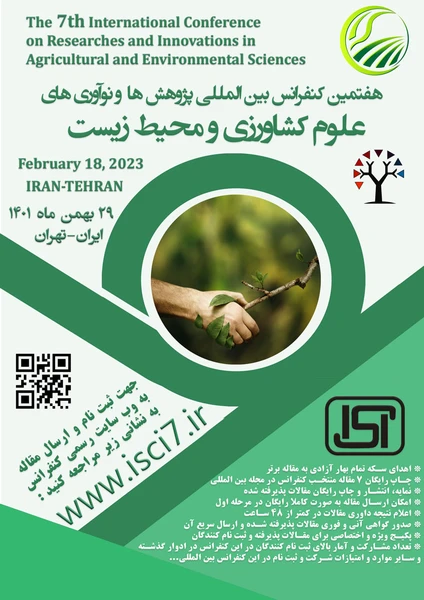-
fortification of milk and dairy products with minerals and vitamins
جزئیات بیشتر مقاله- تاریخ ارائه: 1401/11/23
- تاریخ انتشار در تی پی بین: 1401/12/08
- تعداد بازدید: 118
- تعداد پرسش و پاسخ ها: 0
- شماره تماس دبیرخانه رویداد: 09142959557
fortification of milk and dairy products with minerals and vitamins
vitamins and minerals are essential in assuring human health at all stages of life. iodine, iron, vitamin a, and zinc are identified as some of the most common nutrient deficiencies in the world. to overcome this problem, fortification of foods that are consumed on a daily basis are strongly advisable. in practice, the choice of any combination of food vehicle and fortificant is most important.
common food vehicles that can be fortified with vitamins and minerals include wheat and wheat products, corn, rice, milk and dairy products, vegetable oils, salt, sugar, breakfast cereals, and condiments. milk and dairy products are good sources of high-quality protein and calcium. nutritionists recommend milk consumption in all societies and for all age groups, especially children and the elderly, therefore they can serve as good vehicles in fortification program. liquid milk and dairy products are systematically, either mandatorily or voluntarily, fortified with vitamins (especially d) and minerals (calcium and iron are more common) in some countries but their overall contribution to micronutrient intake is not fully understood.
the selection of proper nutrient compound, technical issues, impact of industrial processing and storage, and cross effect of different micronutrient (when adding two or more) with each other and with dairy compound, must be considered when milk and dairy products are fortified. moreover, some micronutrient compound such as iron showed undesirable effects on the vehicle sensory properties (including, taste, odor, and color) and lipid oxidation. therefore, microencapsulation of nutrient compounds is a promising method to overcome mentioned problems. for example impaired taste and oxidative potential of many iron salts can be reduced by means of microencapsulation.
in general, in the case of food fortification with vitamins, their solubility in food vehicle and heir stability in presence of heat, humidity and oxygen are most challenging issues while, when dairy products are fortified with minerals, the challenging aspects are the effect of minerals on sensory and physicochemical properties of fortified food and the bioavailability of mineral compound.
therefore guidelines and code of practices have to be designed to help the manufacturers concerning proper fortification of fluid milk and dairy products with vitamins and minerals. it must be considered that to ensure proper fortification of dairy products, the enforcement of product monitoring, high tech equipment, and laboratory testing are needed.
مقالات جدیدترین رویدادها
-
استفاده از تحلیل اهمیت-عملکرد در ارائه الگوی مدیریت خلاقیت سازمانی و ارائه راهکار جهت بهبود
-
بررسی تاثیر ارزش وجوه نقد مازاد بر ساختار سرمایه شرکت های پذیرفته شده در بورس اوراق بهادار تهران
-
بررسی تأثیر سطح افشای ریسک بر قرارداد بدهی شرکت های پذیرفته شده در بورس اوراق بهادار تهران
-
بررسی تأثیر رتبه بندی اعتباری مبتنی بر مدل امتیاز بازار نوظهور بر نقد شوندگی سهام با تأکید بر خصوصی سازی شرکت ها
-
تأثیر آمیخته بازاریابی پوشاک ایرانی بر تصویر ذهنی مشتری پوشاک ایرانی (هاکوپیان)
-
معرفی یک مورد پلاسماسیتوم خارج مغز استخوان در سر و گردن
-
تاثیر نوع تغذیه شیرخواران بر وضعیت شاخص های رشدی کودکان 6 ماهه
-
لنفوم اولیه سیستم عصبی مرکزی به دنبال سندرم بهجت: گزارش یک مورد
-
بررسی استاندارد بین المللی riba انگلستان و مقایسه آن با مبحث 19 مقررات ملی ساختمان ایران
-
numerical analysis of pultruded gfrp box girders supporting adhesively-bonded concrete deck in flexure
مقالات جدیدترین ژورنال ها
-
مدیریت و بررسی افسردگی دانش آموزان دختر مقطع متوسطه دوم در دروان کرونا در شهرستان دزفول
-
مدیریت و بررسی خرد سیاسی در اندیشه ی فردوسی در ادب ایران
-
واکاوی و مدیریت توصیفی قلمدان(جاکلیدی)ضریح در موزه آستان قدس رضوی
-
بررسی تاثیر خلاقیت، دانش و انگیزه کارکنان بر پیشنهادات نوآورانه کارکنان ( مورد مطالعه: هتل های 3 و 4 ستاره استان کرمان)
-
بررسی تاثیر کیفیت سیستم های اطلاعاتی بر تصمیم گیری موفق در شرکتهای تولیدی استان اصفهان (مورد مطالعه: مدیران شرکتهای تولیدی استان اصفهان)
-
بررسی رابطه رویدادهای بزرگ و گرایش های اکولوژیکی بر نگرش های برند شهری و کیفیت زندگی (مطالعه موردی شهروندان کلان شهر رشت)
-
بررسی رابطه حمایت اجتماعی و منبع کنترل با سلامت عمومی و رضایت مندی از زندگی در سالمندان بالاتر از 60 سال
-
بررسی ارتباط هوش معنوی با پیشرفت تحصیلی و نقش میانجیگری انگیزش در دانش آموزان دوره متوسطه اول
-
تأثیر ریسک پذیری بر قصد گردشگری سلامت با میانجی گری تبلیغات شفاهی و اعتماد به مقصد
-
بررسی تاثیر مدیریت ریسک بر رابطه بین ویژگی های کمیته حسابرسی و عملکرد شرکت




سوال خود را در مورد این مقاله مطرح نمایید :